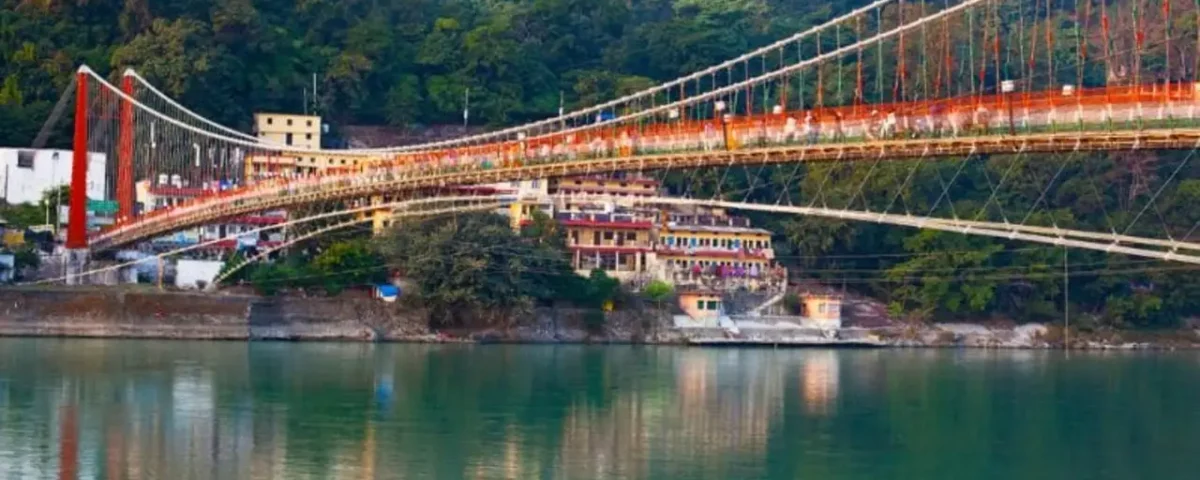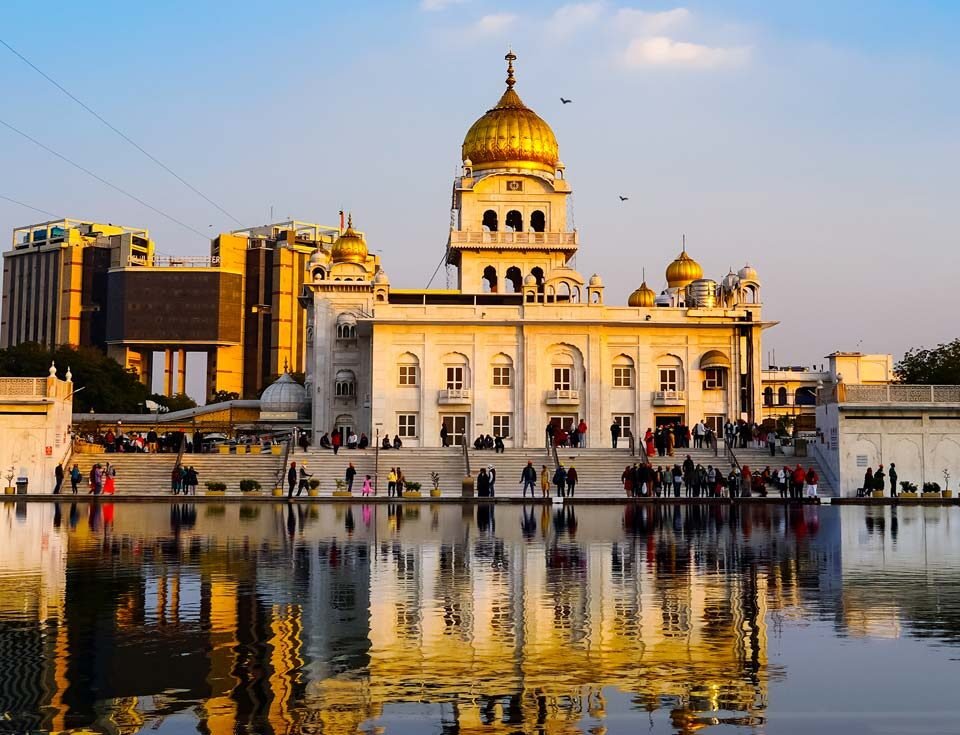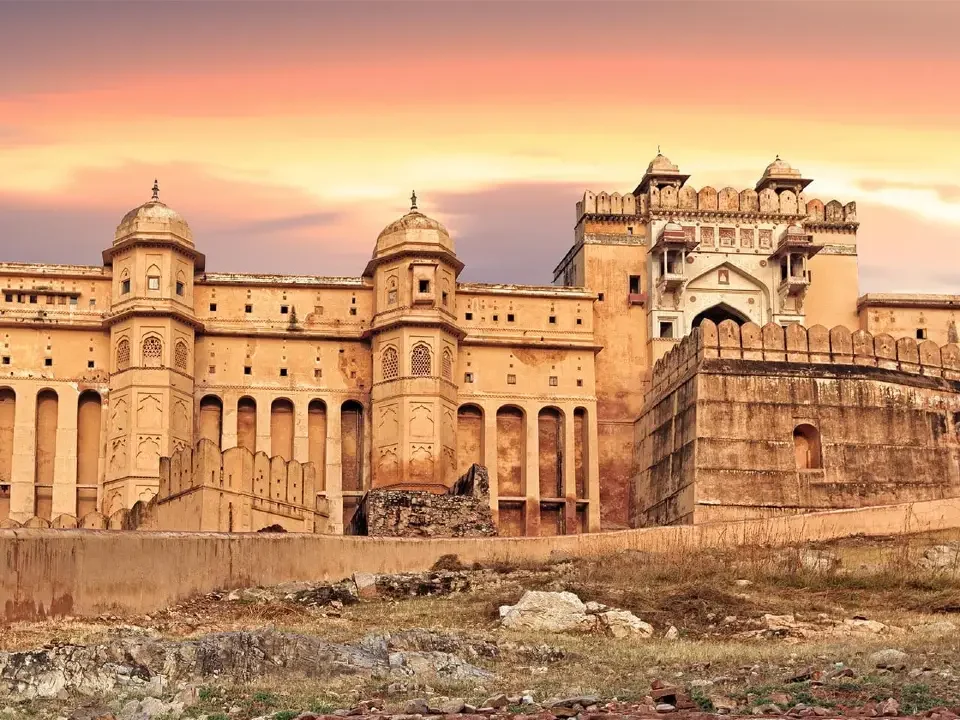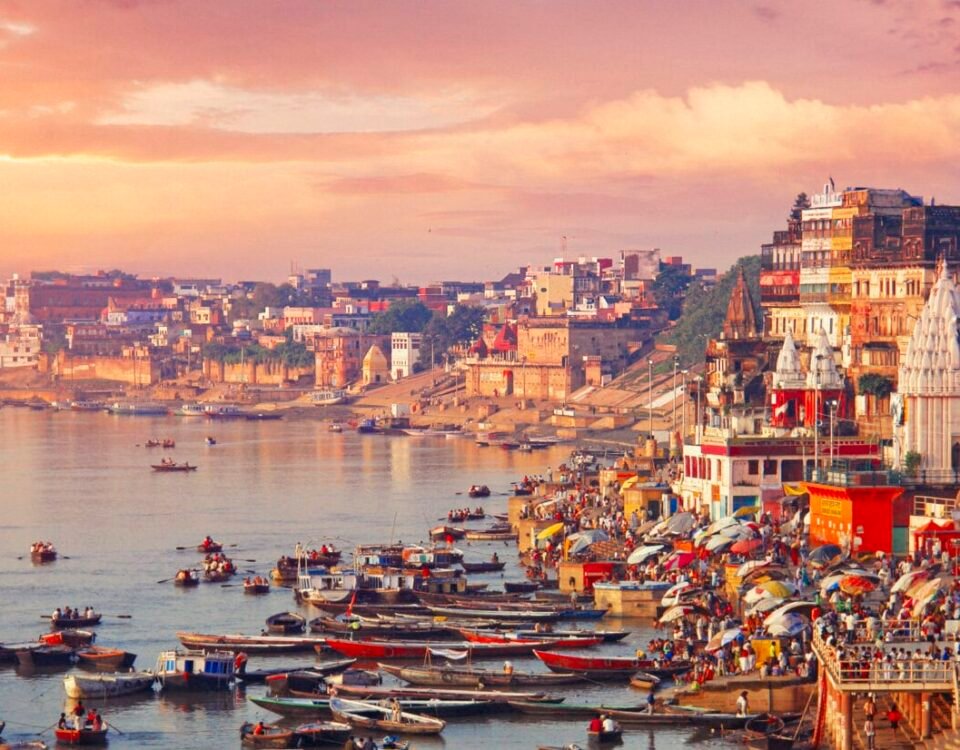Ram Jhula and Laxman Jhula Rishikesh: History, Distance, and Must-Know Travel Guide

Varanasi Ganga Aarti Timings & Assi Ghat Travel Guide
September 29, 2025
Complete Rishikesh Itinerary & Travel Guide: Best Places to Visit in 1 to 3 Days
October 11, 2025Introduction
Rishikesh, often called the “Yoga Capital of the World”, is a serene town nestled on the banks of the Ganges in Uttarakhand, India. Known for its spiritual energy, ancient temples, and ashrams, Rishikesh attracts pilgrims, adventure seekers, and travelers from around the globe. The town beautifully blends spirituality with natural beauty, making it a must-visit destination for anyone exploring Northern India.
Among Rishikesh’s most iconic landmarks are the Ram Jhula and Laxman Jhula, two historic suspension bridges that not only connect the banks of the Ganges but also serve as a symbol of devotion, architecture, and culture. The Ram Jhula Rishikesh bridge is widely visited for its accessibility and proximity to famous ashrams, while the Laxman Jhula Rishikesh holds centuries of legend and spiritual significance.
Both Ram Jhula and Laxman Jhula are more than just bridges—they are gateways to understanding Rishikesh’s rich spiritual heritage. Travelers exploring Ram Jhula and Laxman Jhula Rishikesh can enjoy breathtaking views of the river, visit nearby temples, and immerse themselves in the town’s peaceful atmosphere.
Whether you’re planning a pilgrimage or a sightseeing trip, the Ram Jhula and Laxman Jhula experience in Rishikesh promises history, culture, and scenic beauty all in one.
History of Ram Jhula and Laxman Jhula
The Ram Jhula and Laxman Jhula are not just remarkable engineering feats—they carry centuries of spiritual and cultural significance in Rishikesh. According to local legends, these bridges are linked to the epic tales of Lord Ram and his younger brother, Laxman. It is believed that Laxman crossed the Ganges at the same site where Laxman Jhula now stands while pursuing demons, and centuries later, the Ram Jhula Rishikesh was constructed nearby to accommodate growing foot traffic of devotees and visitors.
The Ram Jhula history dates back to 1986 when the modern iron suspension bridge was built to replace smaller wooden structures. This bridge connects the Sivananda Ashram area with the nearby villages and temples, allowing easy access for pilgrims and tourists alike. On the other hand, the Laxman Jhula history is even older in terms of legend, with the current iron bridge constructed in 1929. Laxman Jhula remains a key spiritual landmark, drawing visitors who want to experience the mystique of the Ganges and the tales of Lord Ram and Laxman firsthand.
Both bridges are more than transportation routes—they are living monuments that reflect the blend of mythology, devotion, and the architectural evolution of Rishikesh. Travelers exploring Ram Jhula and Laxman Jhula Rishikesh can feel the presence of history while walking across these iconic structures, making the visit both a cultural and spiritual experience.
Location & Distance
Both Ram Jhula and Laxman Jhula are located in the northern part of Rishikesh, spanning the sacred Ganges River. Ram Jhula Rishikesh connects the Sivananda Ashram area on the eastern bank to the villages of Muni Ki Reti on the western side. Just a few kilometers upstream lies Laxman Jhula Rishikesh, which links the Tapovan area to nearby ashrams and temples.
For travelers exploring Rishikesh, knowing the distances between these iconic landmarks is helpful. The distance from Ram Jhula to Laxman Jhula is approximately 2 kilometers, making it convenient to visit both in a single sightseeing trip. Meanwhile, the Rishikesh to Ram Jhula distance from the town center is around 3 kilometers, which can be easily covered by walking, local taxis, or rickshaws.
For those planning a broader trip, Rishikesh is also a popular stop on cultural and spiritual itineraries. Travelers can include it as part of the Golden Triangle Tour with Rishikesh or combine it with Varanasi on the Golden Triangle Tour with Varanasi for a complete North India experience.
With its strategic location and proximity to other attractions, visiting Ram Jhula and Laxman Jhula is not only spiritually enriching but also very convenient for travelers exploring Rishikesh and the larger Uttarakhand region.
Architecture and Design
Both Ram Jhula and Laxman Jhula are iconic steel suspension bridges that showcase a blend of engineering precision and aesthetic charm. The bridges are supported by steel cables anchored firmly on both sides of the Ganges, allowing them to withstand the river’s currents and seasonal changes. Their open-air design provides stunning panoramic views of the river, surrounding temples, and ashrams, making them popular spots for photography and sightseeing.
When comparing the two, the Ram Jhula vs Laxman Jhula distinction is quite interesting. Ram Jhula Rishikesh is slightly larger and more modern, accommodating heavier foot traffic and connecting key ashrams, including the Sivananda and Parmarth Niketan. On the other hand, Laxman Jhula Rishikesh retains more historical charm, offering a quieter, spiritual experience that reflects its legendary association with Lord Laxman. Together, they are often referred to as Ram Lakshman Jhula, symbolizing not only their architectural similarity but also their cultural and spiritual connection.
Visitors walking across these bridges can experience a unique combination of history, spirituality, and engineering marvel. For those planning a spiritual journey, the bridges are also perfect vantage points to witness the Ganga Aarti in Rishikesh in the evening, with priests performing rituals along the riverbanks. And for travelers extending their itinerary to Varanasi, the Ganga Aarti in Varanasi provides another unforgettable spiritual experience along the sacred Ganges.
Things to Do Around Ram Jhula and Laxman Jhula
Visiting Ram Jhula Rishikesh and Laxman Jhula Rishikesh is not just about walking across the iconic bridges—it’s about immersing yourself in the vibrant culture, spirituality, and scenic beauty of the area.
Temples and Ashrams
Both bridges are surrounded by famous temples and ashrams. Near Ram Jhula, you’ll find the Sivananda Ashram, known for yoga classes and meditation sessions, and the Parmarth Niketan Ashram, which hosts daily spiritual activities and the evening Ganga Aarti. Close to Laxman Jhula, the Mansa Devi Temple and smaller local ashrams offer peaceful retreats and a glimpse into devotional life along the Ganges.
Cafes and Local Eateries
The areas around Ram Jhula Rishikesh and Laxman Jhula Rishikesh are dotted with cozy cafes, rooftop restaurants, and street food stalls. Visitors can enjoy a cup of chai overlooking the river or try local delicacies while soaking in the panoramic views from the bridge.
River Activities
For adventure enthusiasts, the Ganges provides opportunities for white-water rafting, kayaking, and river walks. Both Ram Jhula and Laxman Jhula serve as perfect starting points for guided river activities, offering a mix of thrill and scenic beauty.
Shopping and Souvenirs
The markets around these bridges are ideal for buying spiritual items, handicrafts, and souvenirs. From prayer beads to handcrafted jewelry, you can find unique items that reflect the rich culture of Rishikesh.
Exploring the surroundings of Ram Jhula and Laxman Jhula allows travelers to experience the spiritual essence, cultural vibrancy, and natural beauty of Rishikesh, making it a truly memorable visit.
Travel Tips for Visiting Ram Jhula and Laxman Jhula
To make the most of your visit to Ram Jhula and Laxman Jhula, it’s important to plan your trip considering timing, accessibility, and local transport options.
Best Time to Visit
The ideal time to explore Ram Jhula Rishikesh and Laxman Jhula Rishikesh is between September and March, when the weather is pleasant and the Ganges flows gently. Avoiding the monsoon season (July–August) is recommended, as heavy rains can make river activities unsafe and local streets slippery. Early mornings and evenings are perfect for witnessing the serene atmosphere and the spiritual rituals along the river.
Managing Crowds
These bridges are popular pilgrimage and tourist spots, so visiting during early mornings helps you enjoy a quieter experience. Evening visits are also rewarding, as you can attend the Ganga Aarti in Rishikesh, but expect larger crowds. Patience is key while exploring the markets and temples around both Ram Jhula and Laxman Jhula.
Accessibility & Local Transport
Both Ram Jhula and Laxman Jhula are easily accessible from Rishikesh city center. Local transport options include:
- Auto-rickshaws and taxis for short trips
- Cycle rickshaws for a leisurely, eco-friendly ride
- Walking is ideal, especially if you want to explore nearby ashrams, cafes, and markets
Parking is limited near the bridges, so using local transport is recommended for convenience.
Practical Tips
- Wear comfortable footwear, as you’ll be walking across the bridges and exploring the surrounding area.
- Carry water and light snacks, especially during the hotter months.
- Respect local customs and temple etiquette when visiting ashrams and religious sites.
By following these tips, visitors can enjoy a safe, comfortable, and spiritually enriching experience at Ram Jhula and Laxman Jhula Rishikesh.
FAQs About Ram Jhula and Laxman Jhula
1. How far is Ram Jhula from Laxman Jhula?
The distance from Ram Jhula to Laxman Jhula is approximately 2 kilometers, making it easy for visitors to explore both bridges in a single trip. Walking between the two bridges offers scenic views of the Ganges and the surrounding temples and ashrams.
2. Can both bridges be visited in a day?
Yes, both Ram Jhula Rishikesh and Laxman Jhula Rishikesh can comfortably be visited in a day. You can start with one bridge in the morning, explore nearby temples, ashrams, and cafes, and then head to the other bridge in the afternoon or evening to witness the beautiful Ganga Aarti in Rishikesh.
3. Are there any entry fees for the bridges?
Both Ram Jhula and Laxman Jhula are public suspension bridges, so there is no entry fee. However, certain nearby temples and ashrams may have nominal charges for special activities, guided tours, or parking.
4. Safety Tips for Visitors
- Wear comfortable shoes as the bridges can be crowded and the surface may be slippery, especially during the monsoon season.
- Avoid leaning over the sides and supervise children at all times.
- Be mindful of cyclists and two-wheelers that occasionally cross the bridges.
- Visit during daylight hours for maximum safety and best scenic views.
5. Best Time to Visit for a Peaceful Experience
For a quieter and more serene experience, visit early in the morning. Evenings are great for witnessing rituals but tend to be busier.
By keeping these tips in mind, visitors can enjoy a safe, enjoyable, and spiritually enriching journey across Ram Jhula and Laxman Jhula in Rishikesh.
Conclusion
Visiting Ram Jhula and Laxman Jhula Rishikesh is more than just a sightseeing experience—it’s a journey into the spiritual heart of India. These iconic bridges offer a unique blend of history, culture, and scenic beauty, allowing travelers to connect with the legends of Lord Ram and Laxman while enjoying the serene flow of the Ganges.
Walking across Ram Jhula Rishikesh or Laxman Jhula Rishikesh, exploring nearby temples and ashrams, or simply soaking in the panoramic river views provides an unforgettable glimpse into Rishikesh’s rich spiritual heritage. Whether you’re a pilgrim, a nature lover, or an adventure seeker, the Ram Jhula and Laxman Jhula experience is sure to leave a lasting impression.
Plan your visit thoughtfully, follow local customs, and take time to appreciate the cultural and spiritual significance of these landmarks. A trip to Ram Jhula and Laxman Jhula Rishikesh promises not just memories, but a deeper connection with the timeless traditions of this sacred town.




